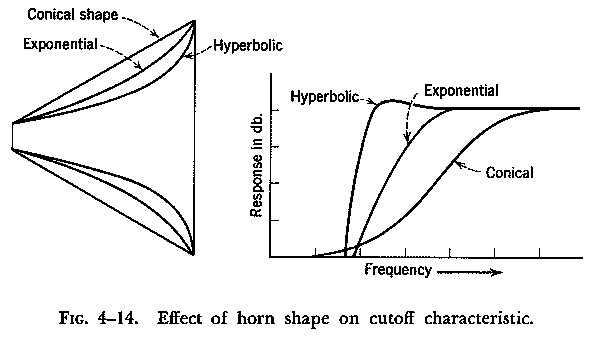The development of the loudspeaker
The development of the loudspeaker

This is the translation to English by Joe Sousa of the Article "Technik der Lautsprecher".
In the PDF text about loudspeakers their technique is described. Early speakers often hide their motor because it is obscured by their armature. As a borderline case a "magnetic" speaker may be called a "Freischwinger" (unbounded armature, cantilever system) because this type is rather common, e.g. in the "Volksempänger" (peoples radio). However, not every speaker which has a horse shoe magnet is a so called "Freischwinger".
Two examples of magnetic speaker motors.

On the left hand side there is a four pole System, and on the right hand side is a "Freischwinger" system. Characteristc for this system is its ability to move "free" in front of the magnetic poles. On the other side, the armature of the four pole speaker vibrates inside the magnetic poles, and with big amplitudes this will give strikes to the magnet, which gives a croaking sond.
As can be seen from the figure, the "Freischwinger" system may also be seen as a simplification of the four pole system.
However, not any system with 4 magnetic poles simply is a "four pole system" as above. Whereas the armature of a four pole system has a pivot (b) the armature of an "inductor dynamic system" moves linear inside the magnetic gap, and the armature no longer may touch the magnets.
.png)
In this figure the horse shoe magnet is omitted. It might be fixed like in the next figure.

The difference between a "four pole system" (left hand side) and a "inductor dynamic system" (right hand side) is clearly visible when the drive coils are regarded.

Early cone speakers had a conical diaphragm. This type of diphragm is prone to partial vibrations. In the '30ies of the last century a shaped form of diaphragm was developed which has less partial vibrations.

This type of diaphragm was called "NAWI" (nicht abwickelbar: non developable), and cannot be constructed from a sector of a circle. The shape of a "NAWI" diaphragm is simlar to the exponetial or hyperbolic shapes of the horns.

A shape similar to classical NAWI may be found at modern broadband speakers.
The Development of the Loudspeaker (.pdf 3.1 MB)
Contents
1 From Telephone receivers to headphones
2 From headphones to the Horn speaker
3 Alternative Transducers
4 Drive systems for loudspeakers
4.1 Magnetic systems
4.2 The AEG System
4.3 The Inductor-Dynamic system
4.4 The Cantilever system (Freischwinger)
4.5 The Electrodynamic moving-coil system
4.6 Permanent-magnet dynamic loudspeakers
4.7 Ribbon and Leaf loudspeakers
5 Diaphragm loudspeakers
5.1 The electrodynamic Loudspeaker
5.1.1 Field coil power supply
5.1.2 “Hum Bucking” and “Shading Ring”
5.2 The Permanent-Magnet Dynamic Loudspeaker
5.3 Holding the diaphragm in place
5.4 Buckling and resonance of the diaphragm
5.4.1 Directionality
5.4.2 Full-range loudspeakers
5.5 Loudspeaker combinations
5.6 Special diaphragm shapes
6 Horn loudspeakers
6.1 Drive systems for a horn-loudspeaker
7 Special forms
7.1 Electrostatic Loudspeakers
7.2 Crystal loudspeakers
7.3 Ionic loudspeakers
Regards
Dietmar
To thank the Author because you find the post helpful or well done.